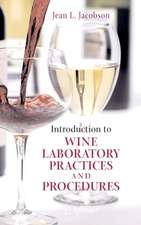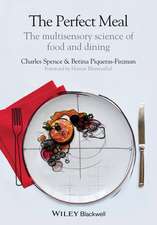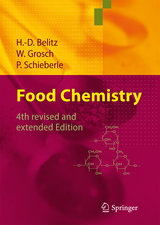Green Chemistry Metrics: A Guide to Determining and Evaluating Process Greenness: SpringerBriefs in Molecular Science
Autor Andrew P. Dicks, Andrei Henten Limba Engleză Paperback – 8 oct 2014
Din seria SpringerBriefs in Molecular Science
-
 Preț: 411.46 lei
Preț: 411.46 lei -
 Preț: 379.09 lei
Preț: 379.09 lei -
 Preț: 356.49 lei
Preț: 356.49 lei -
 Preț: 441.25 lei
Preț: 441.25 lei -
 Preț: 389.70 lei
Preț: 389.70 lei -
 Preț: 376.22 lei
Preț: 376.22 lei -
 Preț: 348.77 lei
Preț: 348.77 lei -
 Preț: 345.14 lei
Preț: 345.14 lei -
 Preț: 347.68 lei
Preț: 347.68 lei -
 Preț: 346.70 lei
Preț: 346.70 lei -
 Preț: 376.43 lei
Preț: 376.43 lei -
 Preț: 342.14 lei
Preț: 342.14 lei -
 Preț: 375.23 lei
Preț: 375.23 lei -
 Preț: 375.23 lei
Preț: 375.23 lei -
 Preț: 379.09 lei
Preț: 379.09 lei -
 Preț: 376.59 lei
Preț: 376.59 lei - 15%
 Preț: 461.73 lei
Preț: 461.73 lei -
 Preț: 378.12 lei
Preț: 378.12 lei -
 Preț: 376.59 lei
Preț: 376.59 lei -
 Preț: 376.59 lei
Preț: 376.59 lei -
 Preț: 375.23 lei
Preț: 375.23 lei -
 Preț: 351.18 lei
Preț: 351.18 lei -
 Preț: 377.73 lei
Preț: 377.73 lei -
 Preț: 372.73 lei
Preț: 372.73 lei -
 Preț: 378.54 lei
Preț: 378.54 lei -
 Preț: 376.96 lei
Preț: 376.96 lei -
 Preț: 377.35 lei
Preț: 377.35 lei -
 Preț: 378.12 lei
Preț: 378.12 lei -
 Preț: 376.04 lei
Preț: 376.04 lei -
 Preț: 346.59 lei
Preț: 346.59 lei -
 Preț: 375.45 lei
Preț: 375.45 lei -
 Preț: 377.73 lei
Preț: 377.73 lei -
 Preț: 381.00 lei
Preț: 381.00 lei -
 Preț: 377.18 lei
Preț: 377.18 lei -
 Preț: 376.96 lei
Preț: 376.96 lei -
 Preț: 380.07 lei
Preț: 380.07 lei -
 Preț: 376.22 lei
Preț: 376.22 lei -
 Preț: 343.72 lei
Preț: 343.72 lei -
 Preț: 376.22 lei
Preț: 376.22 lei -
 Preț: 377.35 lei
Preț: 377.35 lei -
 Preț: 343.72 lei
Preț: 343.72 lei -
 Preț: 376.22 lei
Preț: 376.22 lei -
 Preț: 375.07 lei
Preț: 375.07 lei -
 Preț: 374.85 lei
Preț: 374.85 lei - 15%
 Preț: 464.97 lei
Preț: 464.97 lei -
 Preț: 376.43 lei
Preț: 376.43 lei -
 Preț: 341.75 lei
Preț: 341.75 lei -
 Preț: 374.30 lei
Preț: 374.30 lei -
 Preț: 375.23 lei
Preț: 375.23 lei -
 Preț: 377.57 lei
Preț: 377.57 lei
Preț: 461.40 lei
Preț vechi: 542.83 lei
-15% Nou
Puncte Express: 692
Preț estimativ în valută:
88.29€ • 92.37$ • 73.34£
88.29€ • 92.37$ • 73.34£
Carte tipărită la comandă
Livrare economică 02-16 aprilie
Preluare comenzi: 021 569.72.76
Specificații
ISBN-13: 9783319104997
ISBN-10: 3319104993
Pagini: 90
Ilustrații: VIII, 90 p. 59 illus.
Dimensiuni: 155 x 235 x 10 mm
Greutate: 0.15 kg
Ediția:2015
Editura: Springer International Publishing
Colecția Springer
Seriile SpringerBriefs in Molecular Science, SpringerBriefs in Green Chemistry for Sustainability
Locul publicării:Cham, Switzerland
ISBN-10: 3319104993
Pagini: 90
Ilustrații: VIII, 90 p. 59 illus.
Dimensiuni: 155 x 235 x 10 mm
Greutate: 0.15 kg
Ediția:2015
Editura: Springer International Publishing
Colecția Springer
Seriile SpringerBriefs in Molecular Science, SpringerBriefs in Green Chemistry for Sustainability
Locul publicării:Cham, Switzerland
Public țintă
Upper undergraduateCuprins
Green Chemistry and Associated Metrics.- Atom Economy and Reaction Mass Efficiency.- The E Factor and Process Mass Intensity.- Selected Qualitative Green Metrics.- An Introduction to Life Cycle Assessment.
Recenzii
“This work, part of the ‘SpringerBriefs in Green Chemistry’ series, is suitable for those who desire an overview and a few practical applications of green chemistry principles and associated metrics. … an excellent foundation for a one-to-three-week module of another chemistry course, or a seminar course on green chemistry principles and practice. Summing Up: Recommended. Upper-division undergraduates through professionals/practitioners.” (R. Handler, Choice, Vol. 52 (9), May, 2015)
Notă biografică
Andrew (Andy) Dicks joined the University of Toronto Chemistry Department in 1997. After undergraduate and graduate study in the United Kingdom, he became an organic chemistry sessional lecturer in 1999, and was hired as part of the university teaching-stream faculty two years later. He has research interests in undergraduate laboratory instruction that involve designing novel and stimulating experiments, particularly those that showcase green chemistry principles. This work has lead to over twenty peer-reviewed publications in the chemical education literature. Following promotion in 2006, he became Associate Chair for Undergraduate Studies for two years and developed an ongoing interest in improving the student experience in his department. He has won several pedagogical awards, including the University of Toronto President's Teaching Award, the Canadian Institute of Chemistry National Award for Chemical Education, and most recently a 2011 American Chemical Society-Committee on Environmental Improvement Award for Incorporating Sustainability into Chemistry Education.
Andrei Hent earned a Chemistry B.Sc. with Honors in 2012 from the University of Toronto. Between 2012 and 2014, he worked with Dr. Andrew Dicks to design a laboratory examination for third-year undergraduate students featuring green metrics. Most recently, he and Dr. John Andraos have collaborated on two research papers that focus on communicating new insights about green metrics to an academic audience. His professional interests include effective communication of scientific ideas, especially in the context of organic synthesis, which he intends to pursue in a graduate program.
Andrei Hent earned a Chemistry B.Sc. with Honors in 2012 from the University of Toronto. Between 2012 and 2014, he worked with Dr. Andrew Dicks to design a laboratory examination for third-year undergraduate students featuring green metrics. Most recently, he and Dr. John Andraos have collaborated on two research papers that focus on communicating new insights about green metrics to an academic audience. His professional interests include effective communication of scientific ideas, especially in the context of organic synthesis, which he intends to pursue in a graduate program.
Caracteristici
Written to seamlessly integrate green metrics into any undergraduate organic chemistry curriculum Provides cutting-edge industrial examples Highlights practical applications for students to calculate metrics rapidly and accurately Includes supplementary material: sn.pub/extras












